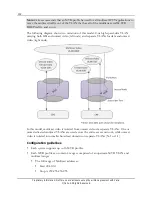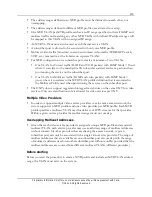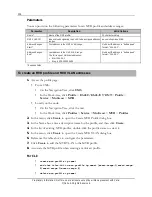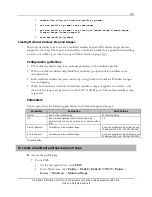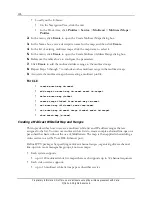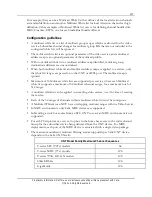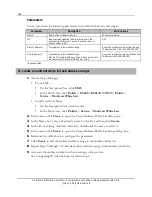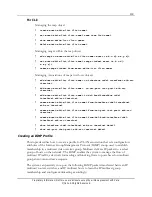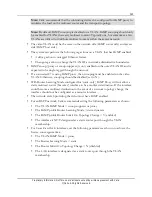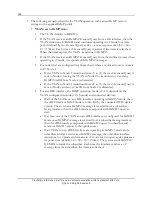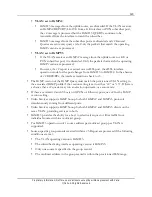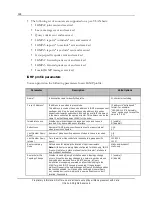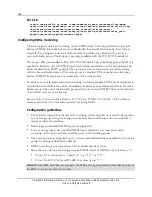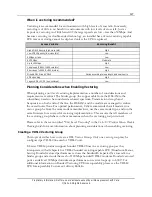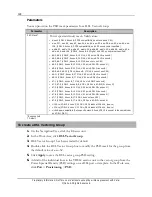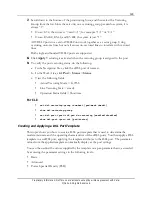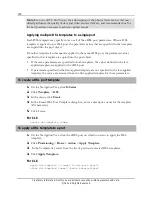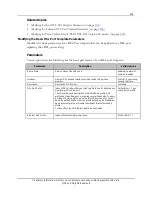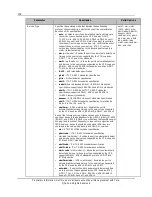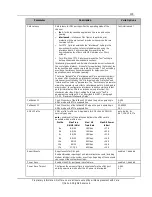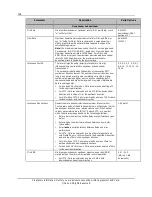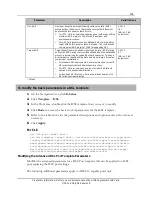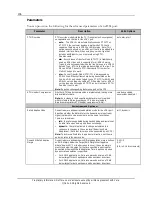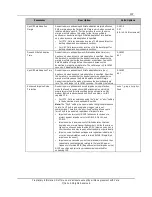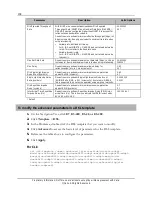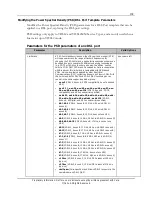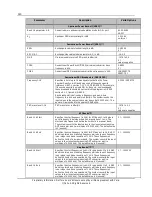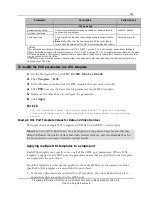
126
Proprietary Information: Not for use or disclosure except by written agreement with Calix.
© Calix. All Rights Reserved.
For CLI:
create igmp-profile <p-name> [name|immediate-leave|robustness|last-memb-
query-count|last-memb-query-intrvl|router-learning-mode|router-solicit-top-
chg|version|query-interval|query-resp-interval|startup-query-
interval|startup-query-count|proxy-ip|host-port-purge-time|router_port-
purge-time|source-specific-mcast-range]
Configuring VDSL Vectoring
E-Series supports unit level vectoring on the VDSL2 lines. Vectoring eliminates cross talk
between VDSL2 lines and thus recovers bandwidth that would otherwise be “lost” due to
crosstalk. Vectoring also ensures a uniform level of performance from pair to pair in a
vectored binder group. The E-Series vectoring complies with the ITU G993.5 standard.
The scope of Recommendation ITU-T G.993.5 (Dynamic Spectrum Management Level 3) is
specifically limited to the self-FEXT (far-end crosstalk) cancellation in the downstream and
upstream directions. FEXT generated by a group of near-end transceivers and interfering
with the far-end transceivers of that same group is cancelled. This cancellation takes place
between VDSL2 transceivers, not necessarily of the same profile.
To achieve cross talk elimination with vectoring, vectoring capable CPE must be deployed in
conjunction with the E-Series units. In addition, E-Series vectored lines must be in the same
binder group. They can't share binder groups with non-vectored VDSL2 lines or the benefits
of cross talk noise recovery are lost.
See the
Calix Customer Advisory Bulletin - E7-2, E3-48, E3-48C, E5-48/48C VDSL2 Modem
Interoperability
for a list of the interop tested vectoring CPEs.
Configuration guidelines
The E-Series support board/unit level vectoring, where all ports on a card work together
as a vector group. Using vectoring on some lines but not all causes un-vectored lines to
interfere with vectored lines.
Both single and bonded VDSL2 ports are supported.
For a vector group to have bonded VDSL2 port members, you must first enable
vectoring on the ports, and then add the ports to the bonding group.
The vector group is configured on the system and individual lines are added to the vector
group. Vectoring is disabled by default.
VDSL vectoring is not supported on E7 modular chassis systems.
Since there is only one vectoring group per VDSL2 card or VDSL2 unit, it is always “1”.
On an E7-2, the syntax is “<card>/1”, e.g. “1/1” or “2/1”.
On an E3-48C, E5-48, and E5-48C the syntax is just “1”.
Note:
When xDSL lines that are not part of a DSL vector group retrain, lines that are part of
the DSL vector group may also retrain.

